A Beginner Guide on Flat Lay Photography
Updated on
Among the myriad styles that have captured the attention of photographers and social media enthusiasts alike, flat lay photography stands out as one of the favorites, with no doubt. Have you ever scrolled through your Instagram feed and paused at a beautifully arranged collection of items? That's the magic of flat lay photography—a technique that transforms everyday objects into stunning visual narratives.

In this blog post, we'll delve into the fascinating world of flat lay photography. Whether you're a budding photographer looking to enhance your skills or a seasoned pro seeking fresh inspiration, this guide will equip you with the knowledge and techniques needed to create captivating flat lay images. From understanding the fundamentals to mastering composition and lighting, we'll explore everything you need to know to elevate your flat lay game. So grab your camera, gather your props, and let's get started on this creative journey!
- Accurate subject separation with transparent details and fine edges in a click
- Produce smooth, gradient-based alpha edges for natural background blending
- Obtain the original quality. Upscale/enhance images to maximize quality with AI
- Provide an AI-powered brush for quick, easy, and flexible manual adjustments
- Bulk processing. Run entirely locally to ensure user data privacy and security
Part 1. Understanding Flat Lay Photography
Flat lay photography, often described as a bird's-eye view of arranged objects, is a captivating technique that has gained immense popularity in recent years. This style involves placing items on a flat surface and capturing them from directly above, creating a visually appealing composition that tells a story. Its simplicity and elegance make it an effective tool for visual storytelling across various platforms, particularly in social media and marketing.
The roots of flat lay photography can be traced back to ancient artistic traditions, particularly still life painting. Artists in the 17th and 18th centuries meticulously arranged objects to convey emotions or narratives, laying the groundwork for what we now recognize as flat lay photography. This modern iteration adapts those timeless principles to meet the demands of today's visual culture, especially in e-commerce and social media contexts.
In today's digital landscape, flat lay photography has become a staple for influencers and brands alike. Its visually striking nature makes it perfect for platforms like Instagram, where aesthetic appeal is paramount. By employing flat lays, creators can effectively showcase products while telling a story about their lifestyle or brand ethos. This method not only enhances engagement but also builds trust with audiences by providing clear and relatable visuals.

Part 2. Why Choose Flat Lay Photography?
One of its primary advantages is the ability to produce striking visuals. By arranging objects on a flat surface and capturing them from above, this style eliminates distractions, allowing viewers to focus solely on the subject. The clean and organized layout enhances the aesthetic quality of the photograph, making it particularly appealing for social media, e-commerce, and marketing materials.
This technique also offers unique storytelling potential through composition. By thoughtfully selecting props and arranging items to reflect a theme or lifestyle, photographers can convey narratives without words. For instance, a flat lay featuring a cozy blanket, a book, and a cup of tea can evoke feelings of relaxation and comfort, effectively communicating the essence of a brand or product.
Moreover, flat lay photography is incredibly versatile and can be applied to various subjects, including fashion, food, beauty products, and lifestyle items. Whether showcasing an outfit or presenting a delicious meal, this approach allows for creative displays of multiple elements in one cohesive image. This adaptability makes it suitable for bloggers, influencers, and businesses alike.
Another significant benefit is enhanced product visibility. Flat lays provide an unobstructed view of products, enabling potential customers to see every detail clearly. This is especially crucial in e-commerce, where consumers want to assess items before making a purchase decision. By showcasing products from above, flat lay photography highlights textures, colors, and features that might otherwise go unnoticed in traditional photography.

In the realm of social media, flat lay photography has proven effective in increasing engagement. Eye-catching flat lay images tend to attract more likes and shares, boosting visibility and driving traffic to content or products. The format is particularly effective for creating a cohesive aesthetic on social media feeds, helping brands establish their identity and connect with followers.
Additionally, flat lay photography is cost-effective and accessible to photographers of all skill levels and budgets. There is no need for expensive equipment or professional models; even a simple setup with a smartphone camera can yield impressive results. This makes it an ideal choice for small businesses or individuals looking to produce high-quality visuals without significant investment.
The simplicity of flat lay photography encourages creativity and experimentation. Photographers can play with various backgrounds, props, and arrangements to develop unique styles that reflect their vision or brand identity. This creative flexibility allows for distinctive images that stand out in a crowded visual landscape.
Part 3. Essential Equipment for Flat Lay Photography
To achieve stunning flat lay photographs, having the right equipment is crucial. While you don't need to invest in the most expensive gear, certain tools can significantly enhance your results. Here's a breakdown of the essential equipment you'll need to get started with flat lay photography:
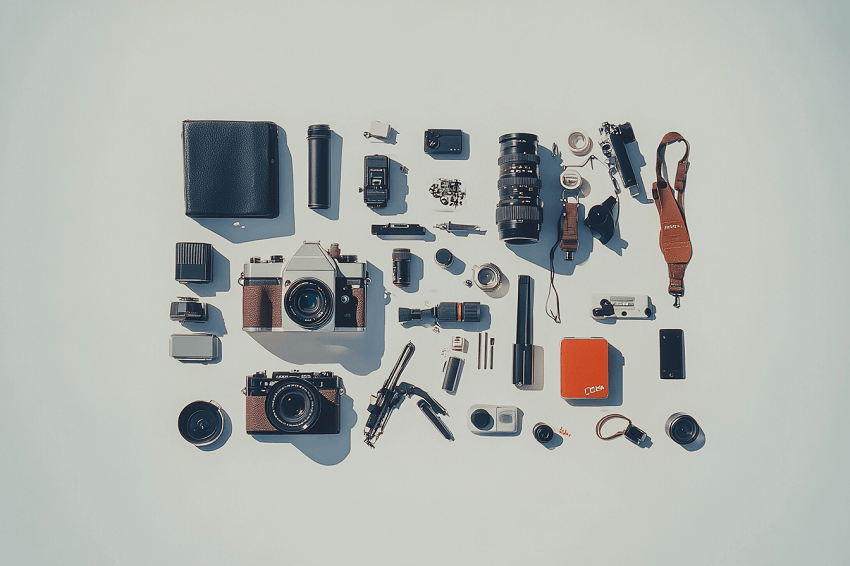
1. Camera
You don't need a high-end camera to create beautiful flat lay images. Many photographers successfully use their smartphones, which often have excellent cameras capable of capturing high-resolution images. If you prefer using a dedicated camera, options like DSLRs or mirrorless cameras are great choices. Some popular models include:
- Canon EOS Rebel T6
- Nikon D7500
- Panasonic Lumix FZ80
2. Lens
If you're using a camera with interchangeable lenses, consider investing in a few versatile options:
- Macro Lens: Ideal for capturing intricate details of small objects.
- Prime Lens: Offers sharp images and can be great for low-light conditions.
- Wide-Angle Lens: Useful for capturing larger compositions without distortion.
Choosing the right lens will depend on your specific needs and shooting style.
3. Lighting
Good lighting is essential for flat lay photography. While natural light can produce beautiful results, it's not always reliable. Consider these lighting options:
- Softboxes: Provide even lighting and reduce harsh shadows.
- LED Lights: Offer consistent illumination and are adjustable for different settings.
- Ring Lights: Great for creating soft, flattering light around your setup.
Using a combination of key lights and fill lights can help achieve balanced exposure across your flat lay.
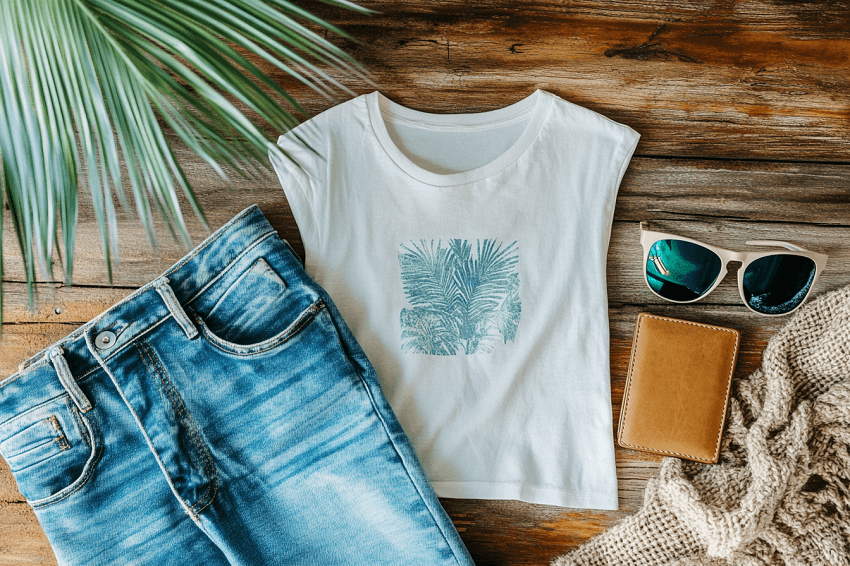
4. Tripod
A sturdy tripod is a must-have for flat lay photography. It stabilizes your camera, preventing motion blur and allowing for consistent framing. Look for tripods that have adjustable heights and angles, enabling you to position the camera directly above your setup easily. Some recommended tripods include:
- Manfrotto MT055XPRO3
- Vanguard Alta Pro 263AB
5. Backgrounds
The background plays a significant role in flat lay photography. Choose simple, neutral-colored surfaces that complement your subject without overwhelming it. Options include:
- Craft paper or poster board
- Wooden boards
- Textured fabrics
Experimenting with different backgrounds can add depth and interest to your compositions.
6. Props
Props are essential for enhancing your flat lay images by adding context and visual interest. Select items that complement your main subject and help tell a story—these could be anything from plants and stationery to textiles or decorative elements. Ensure that the colors and textures of the props harmonize with the overall composition.
Optional Extras
While the above items are essential, consider adding these optional tools to enhance your flat lay photography experience:
- Reflectors: To bounce light back onto your setup and minimize shadows.
- Remote Camera Trigger: Helps you take shots without touching the camera, reducing the risk of shake.
- Editing Software: Programs like Adobe Lightroom or mobile apps such as VSCO can help refine your images post-shoot.
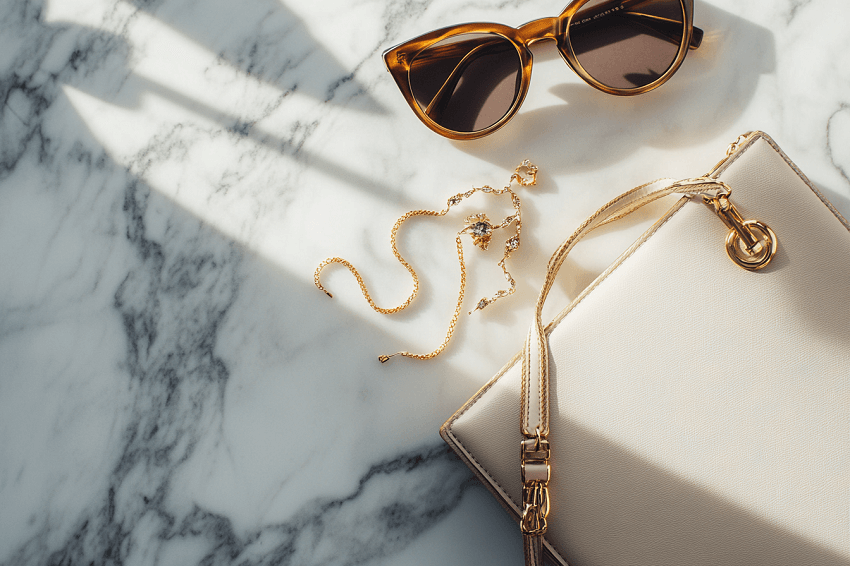
Part 4. Planning Your Flat Lay Composition
Creating a compelling flat lay photograph begins long before you press the shutter button. Thoughtful planning and composition are essential to ensure that your images tell a story and capture the viewer's attention. Here are key strategies to help you plan your flat lay compositions effectively:
Tip 1. Define Your Concept
Start by determining the story or theme you want to convey through your flat lay. This could be anything from a seasonal celebration, a morning routine, or a product showcase. Having a clear concept will guide your choices in props, colors, and arrangement.
Tip 2. Gather Your Props
Once you have a concept, collect the items you want to include in your flat lay. Choose props that complement your main subject and enhance the overall narrative. For example, if you're photographing a cozy breakfast scene, consider including items like a coffee cup, fresh fruit, or a newspaper. Ensure that these elements harmonize in terms of color and texture.
Tip 3. Consider Composition Techniques
Utilizing established composition techniques can elevate your flat lay photography. Here are a few effective methods:
Symmetrical Composition: Place your main subject in the center of the frame and arrange supporting elements around it symmetrically. This creates a balanced and visually appealing image that draws attention to the focal point.
The "C" Shape: Arrange props in a crescent shape, leaving the center open. This composition guides the viewer's eye through the image while keeping it clean and organized.
Diagonal Arrangement: Position objects in a diagonal line across the frame, with taller items at the back and shorter ones at the front. This technique adds depth and interest to your composition.
Tip 4. Use the Rule of Thirds
To create dynamic compositions, consider using the rule of thirds. Enable the grid feature on your camera or smartphone to help align key elements along the grid lines or intersections. This technique can lead to more engaging images by preventing them from feeling static.

Tip 5. Play with Layers and Textures
Layering different elements can add depth and visual interest to your flat lay. For instance, you can place one plate on top of another or use fabric as a backdrop to create texture. Experimenting with various materials—such as wood, paper, or textiles—can enhance the overall aesthetic of your shot.
Tip 6. Mind Your Background
The background is just as important as the props you choose. Opt for simple, neutral-colored surfaces that won't distract from your main subject. Consider using materials like craft paper, fabric, or wooden boards that complement your theme while providing contrast.
Tip 7. Test Different Arrangements
Before settling on a final composition, take time to experiment with different arrangements of your props. Move items around, try various angles, and assess how each change affects the overall image. Don't hesitate to take multiple shots from different perspectives; this will give you options when selecting the best photo later.
Tip 8. Lighting Considerations
Good lighting is crucial for flat lay photography. Natural light is often best; position your setup near a window for soft illumination. If using artificial light sources, ensure they are diffused to avoid harsh shadows that can detract from your composition.
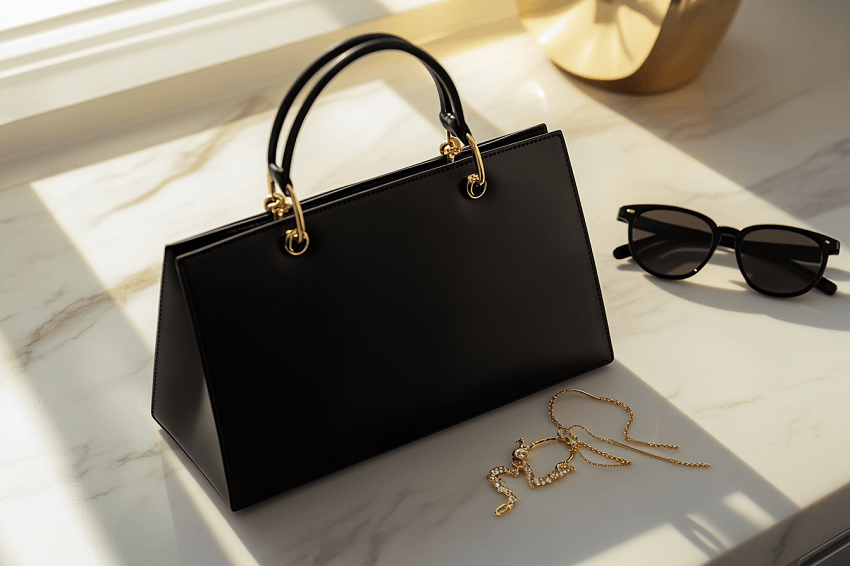
Part 5. Tips for Capturing Stunning Flat Lay Photos
Capturing stunning flat lay photographs requires careful attention to detail, from lighting to composition. Here are some essential tips to help you create eye-catching images that stand out:
Tip 1. Prioritize Lighting
Lighting is one of the most critical elements in flat lay photography. Here are some techniques to achieve optimal lighting:
- Natural Light: Utilize soft, natural light by positioning your setup near a large window. If the sunlight is too harsh, diffuse it using sheer curtains or a white sheet to create a soft glow.
- Artificial Light: If natural light isn't available, consider using softbox lights or LED panels. A double softbox setup can minimize shadows and provide even illumination. Ring lights are also effective, offering shadowless lighting that enhances colors and details.
- Reflectors: Use reflectors to bounce light back onto your subject, filling in shadows and creating a more balanced exposure. White foam boards or silver reflectors work well for this purpose.
Tip 2. Master Composition Techniques
A well-composed flat lay can make all the difference in your photos. Keep these composition tips in mind:
- Rule of Thirds: Use the rule of thirds to create a balanced composition. Position key elements along the grid lines or intersections to draw the viewer's eye.
- Negative Space: Incorporate negative space to create a sense of openness and focus attention on your main subject. This technique helps prevent overcrowding and allows the viewer to appreciate each element.
- Layering and Textures: Experiment with layering different items and using various textures to add depth to your composition. For example, place a textured fabric beneath your props to create visual interest.

Tip 3. Choose Your Background Wisely
The background you select can significantly impact the overall aesthetic of your flat lay. Opt for simple, neutral backgrounds that complement your subject without overwhelming it. Popular choices include:
- Wooden boards
- Marble surfaces
- Textured fabrics
- Craft paper
These backgrounds should enhance, rather than distract from, the main elements of your photo.
Tip 4. Highlight Your Hero Product
Every flat lay should have a focal point or "hero product" that stands out. Use lighting and composition techniques to draw attention to this item: You can position it centrally or use leading lines to guide the viewer's eye toward it, or consider using brighter colors or contrasting textures for your hero product compared to other elements in the frame.
Tip 5. Experiment with Angles
While top-down shots are standard for flat lays, don't hesitate to experiment with different angles. Slightly tilting your camera can add depth and interest to your images, making them feel more dynamic.
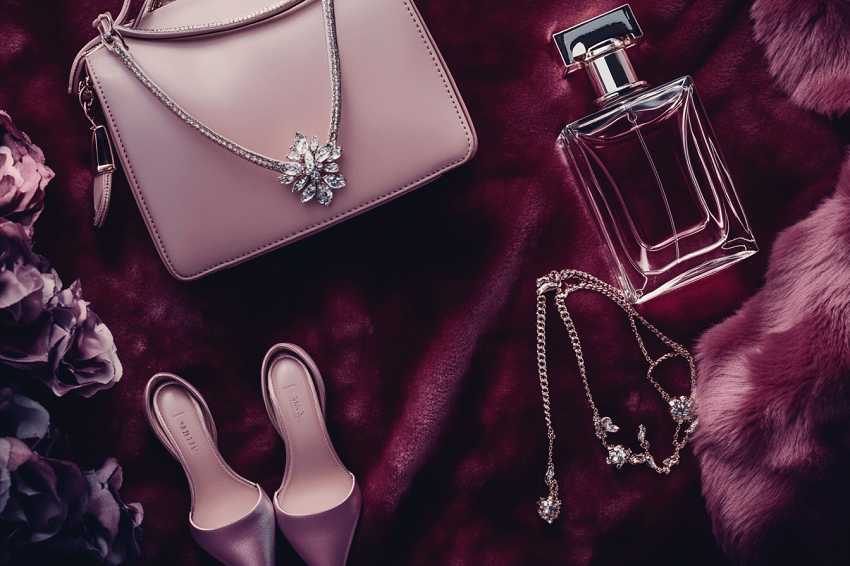
Part 6. Flat Lay Photography Ideas
If you're looking for inspiration to kickstart your flat lay photography, here are some creative ideas that can help you explore different themes and styles. Whether you want to showcase products, tell a story, or simply create visually appealing images, these concepts can serve as a springboard for your next shoot:
Idea 1. Morning Routine
Capture the essence of a typical morning by arranging items like coffee cups, breakfast foods, skincare products, and a book or journal. This theme allows you to convey a sense of calm and routine, inviting viewers into a relatable moment.
Idea 2. Seasonal Celebrations
Celebrate the seasons by incorporating seasonal elements into your flat lay. For example:
- Spring: Use fresh flowers, pastel colors, and gardening tools.
- Summer: Feature beach towels, sunglasses, sunscreen, and tropical fruits.
- Autumn: Include pumpkins, cozy blankets, and warm drinks.
- Winter: Arrange holiday decorations, hot cocoa, and winter clo thing.
Idea 3. Fashion Flat Lay
Showcase your favorite outfits or accessories with a fashion flat lay. Arrange clothing items, shoes, jewelry, and bags in a way that highlights your personal style. This is an excellent way to promote fashion brands or share outfit inspiration on social media.
Idea 4. Food Styling
Food flat lays are incredibly popular on platforms like Instagram. Create visually appealing compositions using colorful ingredients or beautifully plated dishes. Consider themes like brunch spreads, picnic setups, or dessert displays to entice your audience.
Idea 5. Travel Essentials
Capture the excitement of travel by arranging items like passports, travel guides, luggage tags, and souvenirs from your adventures. This theme can evoke wanderlust and inspire viewers to plan their next trip.
Idea 6. DIY Projects
If you enjoy crafting or DIY projects, showcase your supplies and finished products in a flat lay. Arrange tools, materials, and the final creation to demonstrate the process and inspire others to try their hand at similar projects.
Idea 7. Workspace Inspiration
Create an organized workspace flat lay featuring your desk essentials—laptops, notebooks, pens, plants, and coffee mugs. This theme can resonate with creatives and professionals alike while promoting productivity and organization.
Idea 8. Self-Care Setup
Highlight the importance of self-care by arranging items that promote relaxation and wellness. Consider including candles, bath products, herbal teas, books, and cozy blankets to create a soothing atmosphere in your flat lay.
Idea 9. Hobbies and Interests
Showcase your hobbies by arranging items related to them—be it art supplies for painting enthusiasts, musical instruments for musicians, or sports gear for fitness lovers. This approach allows you to share your passions while connecting with like-minded individuals.
Idea 10. Color Themes
Choose a specific color palette for your flat lay to create a cohesive look. This could be monochromatic (different shades of one color) or complementary colors that enhance each other's vibrancy. Color-themed flat lays are visually striking and can make a strong impact on viewers.
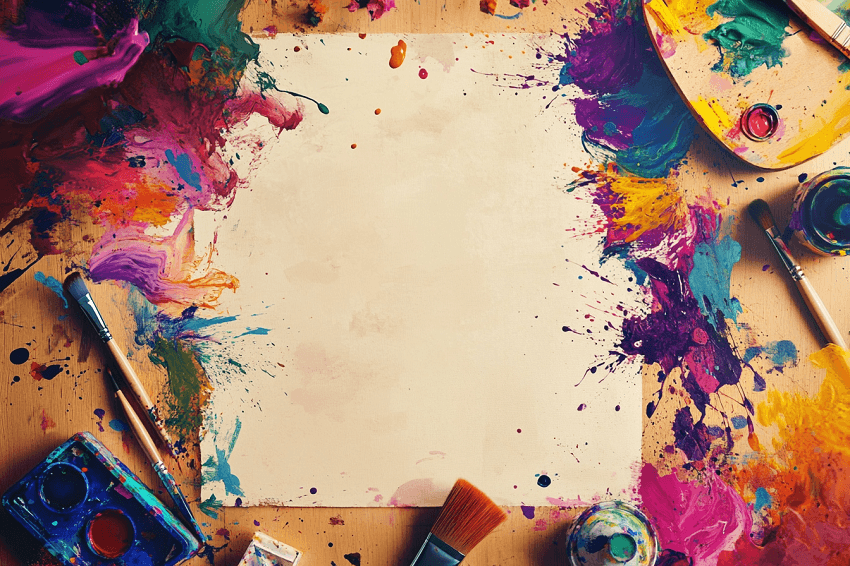
Part 7. Common Mistakes to Avoid
While flat lay photography can be a rewarding and creative endeavor, there are several common pitfalls that can detract from the quality of your images. By being aware of these mistakes, you can improve your flat lay photography skills and produce more compelling visuals. Here are some key mistakes to avoid:
Mistake 1. Overcrowding the Frame
One of the most frequent mistakes in flat lay photography is overcrowding the composition with too many items. While it can be tempting to include every prop you have, this often leads to a cluttered image that confuses viewers. Instead, focus on a few key elements that support your theme and allow each item to shine. Aim for simplicity and clarity in your arrangements.
Mistake 2. Ignoring Lighting Conditions
Lighting is crucial in photography, and neglecting it can result in dull or poorly exposed images. Avoid shooting in harsh midday sunlight, which can create unflattering shadows and highlights. Instead, opt for soft, diffused lighting—either from natural sources or artificial lights—to achieve a more balanced exposure. Always test your lighting setup before finalizing your composition.
Mistake 3. Neglecting Background Choices
The background can make or break a flat lay photograph. Using busy or distracting backgrounds can divert attention from your main subject. Choose simple, neutral backgrounds that complement your props without overwhelming them. Experiment with different materials like wood, fabric, or paper to find what works best for your composition.
Mistake 4. Forgetting About the Rule of Thirds
Failing to consider composition techniques like the rule of thirds can result in static and uninteresting images. This rule encourages you to position key elements along grid lines or intersections, creating a more dynamic composition. Take time to visualize how you can apply this technique to enhance the visual flow of your flat lay.
Mistake 5. Shooting at the Wrong Angle
While top-down shots are standard for flat lay photography, sticking rigidly to this angle can limit creativity. Experimenting with slight tilts or different perspectives can add depth and interest to your images. Don't hesitate to try various angles until you find the one that best showcases your arrangement.
Mistake 6. Neglecting Post-Processing
Many photographers overlook the importance of post-processing in enhancing their images. Even if you capture a great shot, minor adjustments in brightness, contrast, and saturation can significantly improve its overall appeal. Use editing software like Adobe Lightroom or mobile apps to refine your images and make them pop.
Mistake 7. Rushing the Setup
Flat lay photography requires patience and attention to detail. Rushing through the setup process often leads to hasty arrangements that lack thoughtfulness. Take your time arranging props, adjusting lighting, and testing different compositions until you achieve the desired look.
Mistake 8. Not Practicing Enough
Finally, one of the biggest mistakes is not practicing regularly. Flat lay photography is an art that improves with experience and experimentation. Don't be afraid to try new ideas, learn from your mistakes, and continuously refine your skills.
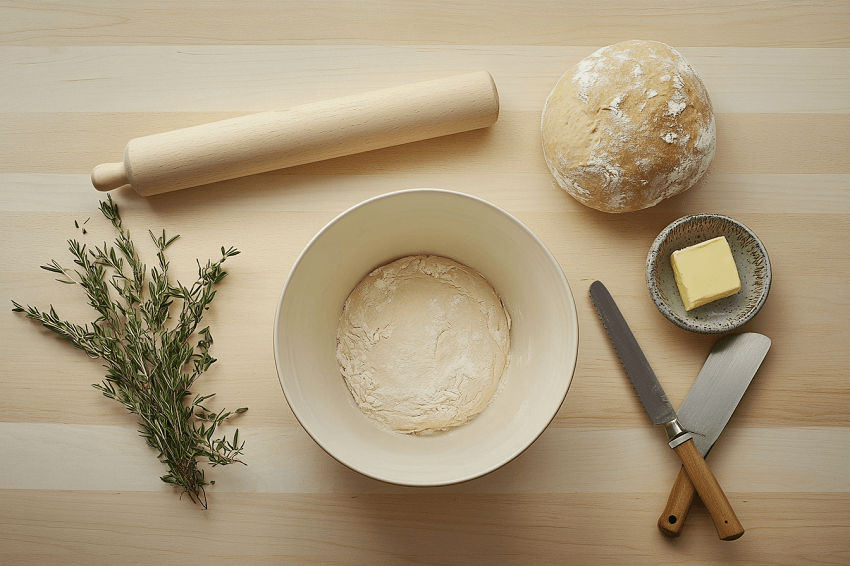
Conclusion
Flat lay photography is a powerful and versatile technique that allows you to tell compelling stories through carefully arranged objects. Whether you're a seasoned photographer or just starting, mastering this art form can enhance your visual storytelling and engage your audience in meaningful ways.
Throughout this guide, we've explored the fundamentals of flat lay photography, from understanding its unique characteristics to the essential equipment needed for success. We've discussed the importance of planning your composition, capturing stunning images, and avoiding common pitfalls that can detract from your work.
As you embark on your flat lay photography journey, remember that creativity knows no bounds. Experiment with different themes, props, and arrangements to develop a style that reflects your personality or brand. Don't hesitate to learn from each shoot and continuously refine your skills through practice.
With patience and persistence, you can create captivating flat lay images that not only showcase your subjects but also resonate with viewers on a deeper level.

